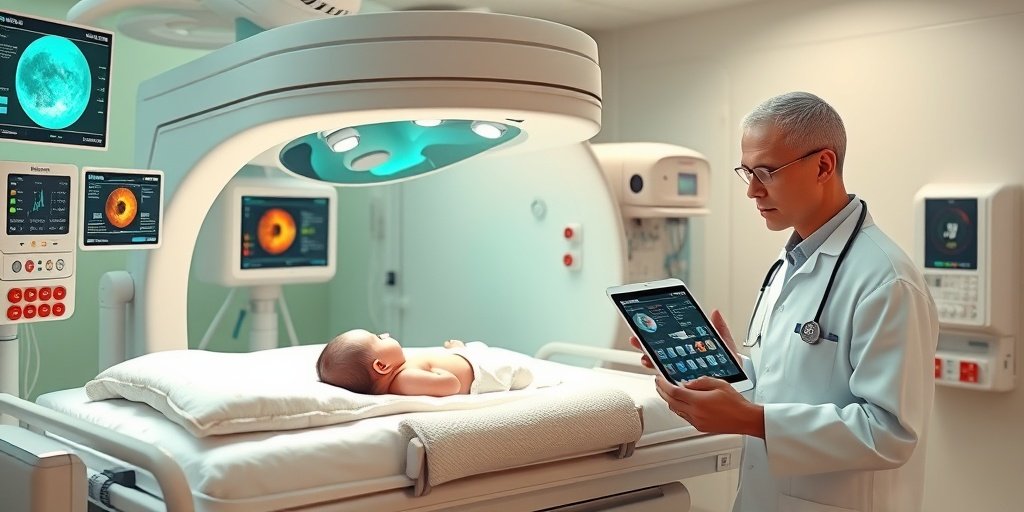⚡ Quick Summary
A systematic review highlights the global shortage of trained ophthalmologists in managing retinopathy of prematurity (ROP), emphasizing the need for enhanced education and training. The integration of tele-education and artificial intelligence offers promising solutions, particularly in low- and middle-income countries (LMIC).
🔍 Key Details
- 📊 Focus: Retinopathy of prematurity (ROP) training and education
- 🌍 Global issue: Shortage of trained ophthalmologists
- ⚙️ Methodology: Systematic review adhering to PRISMA guidelines
- 📚 Databases searched: PubMed, Embase, SCOPUS
- 💡 Key technologies: Telemedicine, tele-education, artificial intelligence
🔑 Key Takeaways
- 👁️ ROP is a significant concern in neonatal care, requiring specialized training.
- 📉 Current training programs are insufficient due to limited exposure in residencies and fellowships.
- 🌐 Tele-education can enhance accessibility to ROP training, especially in LMIC.
- 🤖 Artificial intelligence has the potential to support ROP diagnosis and management.
- 🏫 Curriculum development in residency and fellowship programs is crucial for effective training.
- 📈 Increased training could lead to better outcomes for infants at risk of ROP.
- 🔄 Continuous education is essential to keep pace with advancements in ROP management.

📚 Background
Retinopathy of prematurity (ROP) is a leading cause of vision impairment in children worldwide. The condition primarily affects premature infants, and its management is heavily reliant on the expertise of trained ophthalmologists. Unfortunately, many healthcare systems face a shortage of professionals equipped to identify and treat ROP, largely due to inadequate training opportunities during medical education.
🗒️ Study
This systematic review aimed to assess the current state of ROP education and training globally. By analyzing literature from various databases, the authors sought to identify gaps in training and propose strategies to enhance the workforce’s capacity to manage ROP effectively. The review also explored innovative approaches, such as tele-education and artificial intelligence, to improve training accessibility.
📈 Results
The findings indicate a significant need for improved training programs in ROP management. The integration of tele-education and artificial intelligence was highlighted as a promising avenue to address the training gap, particularly in regions with limited resources. However, for these technologies to be effective, they must be incorporated into the curricula of ophthalmology residency and fellowship programs.
🌍 Impact and Implications
The implications of this study are profound. By enhancing ROP training through innovative methods, we can potentially improve the quality of care for vulnerable infants. This could lead to a decrease in the incidence of vision impairment caused by ROP, particularly in low- and middle-income countries where resources are scarce. The integration of technology in medical education could serve as a model for other specialties facing similar challenges.
🔮 Conclusion
This systematic review underscores the urgent need for enhanced training in retinopathy of prematurity management. By leveraging advancements in tele-education and artificial intelligence, we can bridge the training gap and improve outcomes for at-risk infants. The future of ROP management looks promising, and continued research and innovation in this field are essential.
💬 Your comments
What are your thoughts on the integration of technology in medical training for ROP? We would love to hear your insights! 💬 Leave your comments below or connect with us on social media:
Retinopathy of prematurity training and education: A systematic review.
Abstract
Globally, management of retinopathy of prematurity (ROP) is limited by a shortage of ophthalmologists who are adequately trained in identifying disease due to limited exposure in ophthalmology residencies and fellowships. We review the current state of ROP education and training and propose strategies to addressing the ROP workforce shortage. Adhering to Preferred Reporting Items for Systematic Reviews and Meta-Analyses (PRISMA) guidelines, a systematic review was performed using PubMed, Embase, and SCOPUS. Terms that were used in the database searches include telemedicine, tele-education, tele-health, retinopathy of prematurity, artificial intelligence, medical education, training. Advancements in tele-education and artificial intelligence have paved the way for increased accessibility to ROP training, particularly in low- and middle-income countries (LMIC); however, to ensure that these new modalities are effective in clinical practice and training, ophthalmology residency and fellowship programs must implement relevant education and training into their curricula.
Author: [‘Song A’, ‘Lee E’, ‘Ostmo SR’, ‘Jonas KE’, ‘Chervinko MA’, ‘Coyner AS’, ‘Campbell JP’, ‘Chan RVP’]
Journal: Surv Ophthalmol
Citation: Song A, et al. Retinopathy of prematurity training and education: A systematic review. Retinopathy of prematurity training and education: A systematic review. 2025; (unknown volume):(unknown pages). doi: 10.1016/j.survophthal.2025.06.007